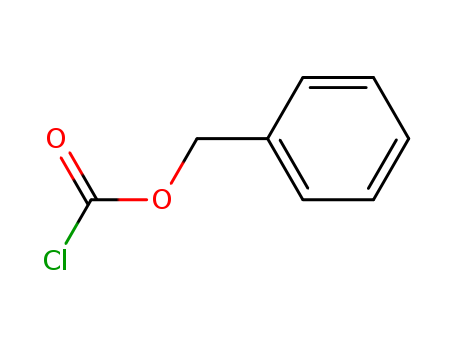10.1021/jo00357a023
The research focuses on the highly selective total synthesis of enantiomerically pure (-)-anisomycin, an antibiotic with significant activity against pathogenic protozoa and fungi, which has been used in the treatment of amebic dysentery and trichomonas vaginitis. The study's purpose was to achieve a chiral total synthesis of optically pure (-)-anisomycin through a series of virtually complete regio- and stereocontrolled reactions, without the need for isomer separation. The synthesis began with 4-O-benzyl-2,3-O-bis(methoxymethyl)-L-threose derived from diethyl L-tartrate as the chiral building block and involved several key steps, including a-chelation-controlled addition of hydride, stereospecific cyclization, and selective introduction of the acetyl group with complete regiochemical control. The process utilized various chemicals such as diethyl L-tartrate, 4-methoxybenzyl chloride, benzyl chloroformate, and protecting groups like tert-butyldimethylsilyl and methoxymethyl groups. The successful synthesis was confirmed by comparing the synthesized (-)-anisomycin with authentic samples through melting point, specific optical rotation, and NMR and mass spectrometry analysis, proving 100% enantiomeric purity. The study concluded with the investigation of the antiprotozoal and antifungal activities of the synthetic (-)-anisomycin.
10.1021/jo701975y
The research focuses on the preparation and addition-elimination reactions of benzyl R,,-trifluoroacrylate (1), aiming to develop a new stereoselective approach to (Z)--substituted R,-difluoroacrylates. The study successfully achieved the synthesis of benzyl R,,-trifluoroacrylate (1) through two methods: Et2AlCl-catalyzed reductive Br-F elimination of benzyl 2-bromo-2,3,3,3-tetrafluoropropanoate (3) and palladium-catalyzed cross-coupling reaction of 1,2,2-trifluorovinylstannane (4) with benzyl chloroformate. The researchers then explored the reaction of 1 with various Grignard reagents or dialkylzinc reagents in the presence of copper(I) salt, yielding the corresponding -substituted R,-difluoroacrylates with high Z-selectivity and in high yields. Additionally, trialkylaluminum reagents were found to be effective nucleophiles, affording the addition-elimination products in good yields but with low stereoselectivity. The study concluded that these methods provide an efficient and facile preparation of the target compounds, which are of significant synthetic value for constructing fluorine-containing compounds in biological and materials chemistry.
10.1016/j.tetlet.2013.02.029
The research presents an innovative and efficient method for the asymmetric synthesis of (?)-venlafaxine, an antidepressant drug. The purpose of this study was to develop a practical and environmentally friendly approach to synthesize (?)-venlafaxine using an organocatalyst derived from L-proline, overcoming the limitations of previous methods that either used expensive, environmentally hazardous catalysts or resulted in significant material loss. The synthesis strategy involved several key steps: an asymmetric organocatalytic Michael addition of cyclohexanone to nitrostyrene using the L-proline-based catalyst to form the core structure, followed by selective reductions and transformations to introduce the tertiary hydroxyl group and the N,N-dimethyl group. The final product, (?)-venlafaxine, was obtained with high enantiomeric purity (≥99% ee) and in good yield (60%). The key chemicals used included L-proline for the organocatalyst, nitrostyrene synthesized from anisaldehyde and nitromethane, and various reagents for selective reductions and functional group transformations such as NaBH4, NiCl2·6H2O, benzyl chloroformate (Cbz-Cl), and lithium aluminum hydride. The study concludes that this method provides a concise and efficient route to synthesize (?)-venlafaxine from readily available starting materials, and by using different enantiomers of the proline-based catalyst, both enantiomers of venlafaxine can be accessed without material loss. This approach not only enhances the practicality of venlafaxine synthesis but also aligns with green chemistry principles by avoiding the use of hazardous catalysts.
10.1016/S0040-4039(00)96022-2
The study investigates the thermal decomposition of 3-benzyloxy-3-chlorodiazirine in acetonitrile at 25°C to produce benzyloxychlorocarbene, which further fragments to form the benzyl cation. The researchers conducted a detailed analysis of the reaction, examining the effects of different solvents and solvent conditions on the fragmentation process. They found that the reaction proceeded cleanly in acetonitrile, with only minor solvent effects on the rate constant. The study also included an Arrhenius study to determine the energy of activation and a Hammett study to understand the reaction's sensitivity to substituent effects. The researchers proposed that the thermal fragmentation of benzyloxychlorocarbene yields intermediates such as ion pairs and suggested that the geometry of the diazirine prior to decomposition may influence the distribution of these ion pairs. Additionally, they explored the photolytic decomposition of the compound and observed the formation of benzyl radical, although they concluded that this was not the principal pathway for the fragmentation of the carbene. The study was supported by the National Science Foundation and contributed to the understanding of carbene chemistry and the formation of carbocations.
10.1055/s-1998-1891
The research presents a novel and general synthetic approach to the asymmetric synthesis of enantiopure α-amino ketones and syn-β-amino alcohols, which are key components of bio-active molecules. The study employs α-amino alkyllithiums, generated via an improved version of Pearson's transmetalative protocol, as key synthetic intermediates. The purpose of this research was to overcome the challenges associated with the enantioselective generation and configurational instability of α-amino organolithiums, which had limited the exploration of this synthetic route. The researchers successfully developed a more convenient and flexible route to the requisite stannane, and demonstrated the synthetic potential of this method in the context of the asymmetric synthesis of syn-β-amino α-trifluoromethyl alcohol, a candidate for protease inhibitor. The chemicals used in the process include α-hydroxy stannane, potassium salt of (S)-4-phenyl-2-oxazolidinone, n-BuLi, aldehydes, Dess-Martin periodinane, L-Selectride, and benzyloxycarbonyl chloride, among others. The conclusions of the research indicate the development of an efficient and flexible synthetic route to enantiopure α-amino ketones and syn-α-amino alcohols, with ongoing work to expand the synthetic scope of this methodology.



 T,
T,  C,
C,  N,
N,  F
F


